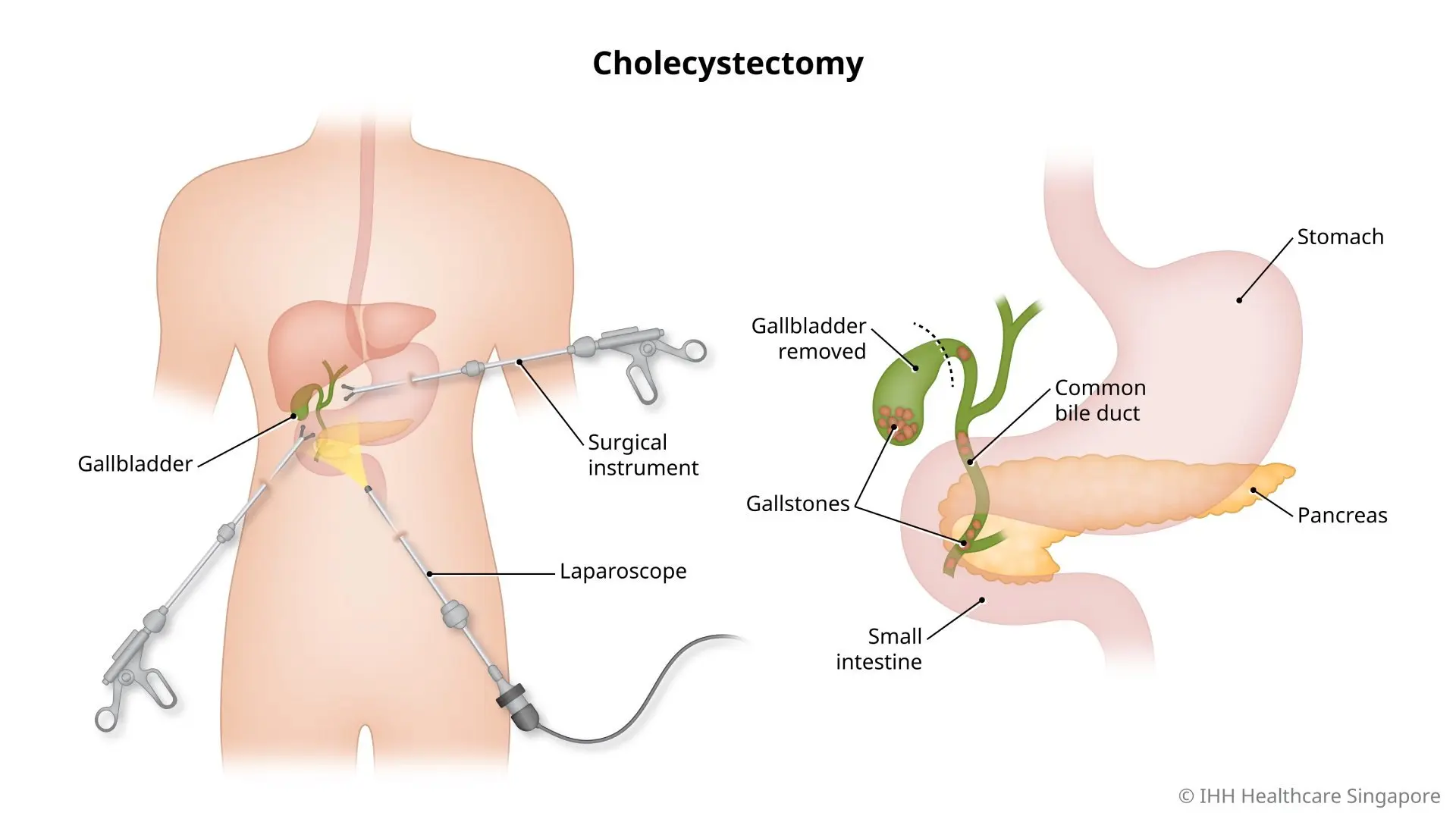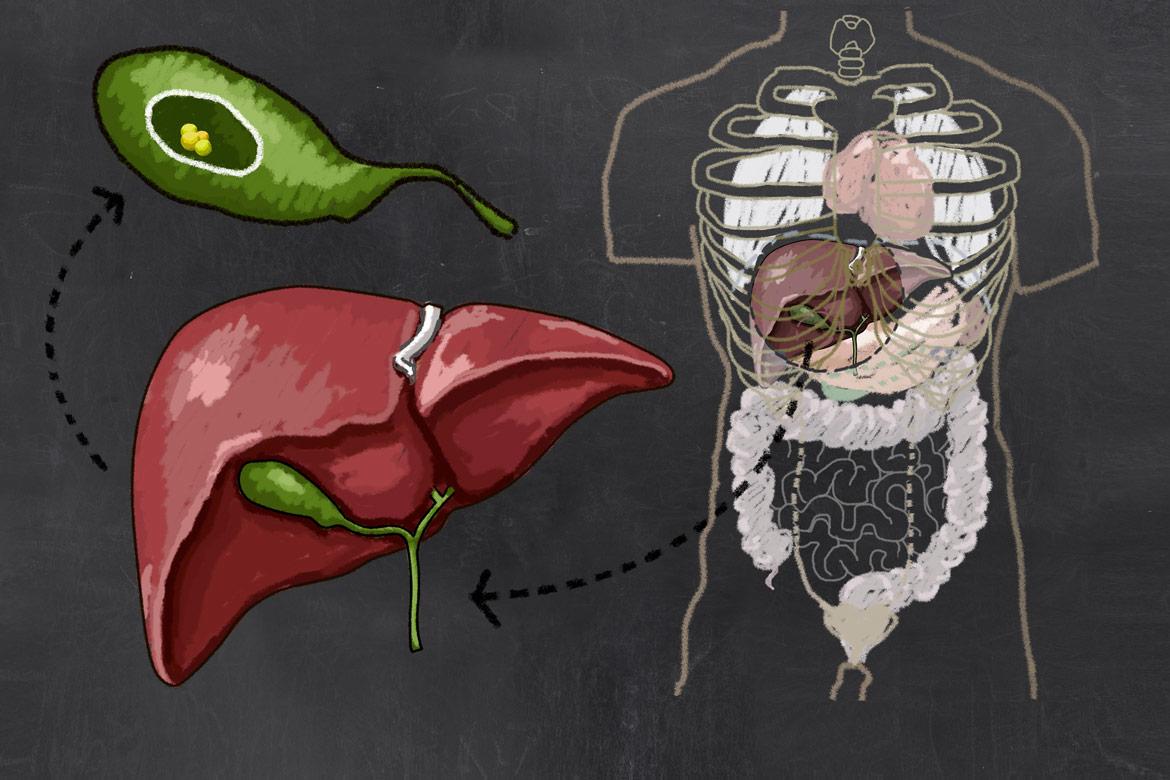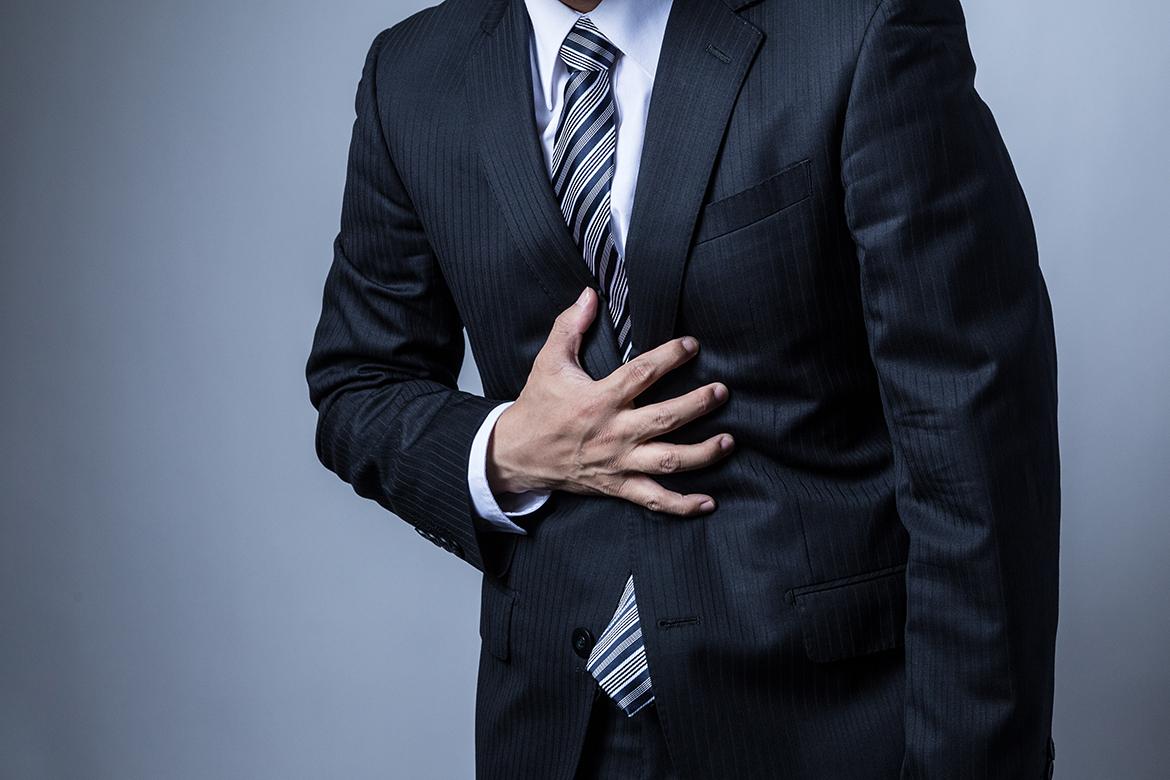What is a cholecystectomy (gall bladder removal)?

Cholecystectomy, or gall bladder removal surgery, is the surgical removal of the gall bladder.
It is performed when the recurring formation of gallstones on the wall of the gall bladder:
- Leads to severe symptoms such as abdominal pain, nausea, vomiting and digestive problems.
- Results in complications such as infections.
How it works
Laparoscopic cholecystectomy is the recommended treatment for patients with symptomatic gallstones. It uses keyhole surgery to remove diseased or inflamed gall bladders.
During the procedure, fine instruments and a video camera are inserted into the abdomen through small incisions. These small incisions enable faster recovery and lower infection risk.
Why do you need a cholecystectomy?
Cholecystectomy or gall bladder removal may be recommended if you experience recurring gallstone formation or severe symptoms such as:
- Abdominal pain (usually on the right side, just under the ribs, or in the upper middle part of the stomach)
- Pain in the back or right shoulder
- Bloating or indigestion
- Nausea or vomiting
If left untreated, gallstones can result in complications such as:
- Cholecystitis (infection of the gall bladder)
- Cholangitis (blockage of the bile duct resulting in pain, fever and jaundice)
- Pancreatitis (inflammation of the pancreas)
What are the risks and complications of a cholecystectomy?
Cholecystectomy is a safe procedure, with a low risk of complications. However, like any other surgery, it carries a small risk.
Risks and complications of cholecystectomy include:
How do you prepare for a cholecystectomy?
You will undergo a comprehensive pre-op consultation. Your doctor will also review your blood test and scan results.
Your doctor will advise you on the preparations required before your surgery. This may include:
- Not consuming any food and drinks for 4 hours or more before surgery
- Using a special antibacterial soap in the shower before coming to the hospital for your surgery
- Arranging a ride home
- Arranging for someone to stay with you after your surgery
Note: It is important to inform your doctor if you are currently taking any medication. Certain medications can interfere with the surgical procedure.
You will need to inform your doctor if you are pregnant or could possibly be pregnant.
What can you expect in a cholecystectomy?
Gall bladder surgery can be done through:
- Laparoscopic (keyhole) surgery
- Conventional open surgery
Laparoscopic surgery is usually preferred as the smaller incisions mean faster recovery and a lower risk of infection.
You will be asleep throughout the procedure as cholecystectomy is performed using general anaesthesia.
Conventional laparoscopic surgery
Your surgeon will make 4 incisions through the abdominal wall. He or she will insert a small camera through one incision and remove the gall bladder through the other incisions.
You may receive 3 – 4 visible scars on the upper abdomen.
Single-incision laparoscopic surgery (SILS)
Your surgeon will make a single cut through the umbilicus, your body’s ‘natural orifice’. The camera and instruments used for the surgery pass through this single incision.
The resultant scar is invisible when healed as it is embedded deep inside the umbilicus.
“Open” cholecystectomy
This procedure is also known as open gall bladder removal. During the procedure, your surgeon will remove the diseased or inflamed gall bladder via a single, large cut in the abdomen.
This approach is sometimes required if laparoscopic surgery is not possible. You may need to undergo this procedure if you have the following conditions:
- Severe infection
- Complicated anatomy
- Scar tissue from previous abdominal surgery
After the procedure
Common cholecystectomy side-effects include:
- Difficulty digesting fats
- Diarrhoea
- Flatulence
Care and recovery after cholecystectomy
If you underwent:
- Laparoscopic (keyhole) surgery, you will have to stay in the hospital for 1 night after laparoscopic gall bladder removal surgery. Recovery after laparoscopic surgery is quite fast. You may resume normal activities the next day after surgery.
- Open surgery, you will have to stay in the hospital for 3 – 5 nights if you had open surgery.
After 1 – 2 weeks, you can start with some gentle exercise.
Your doctor will give you instructions on how to care for your incision wounds. You should be able to get your stitches removed at your follow-up appointment.
While you may return to a normal diet the day after your surgery, it is best to avoid fatty and oily food for a period of time. Do take food with more fibre content, like fruits and vegetables, to aid digestion after surgery.









